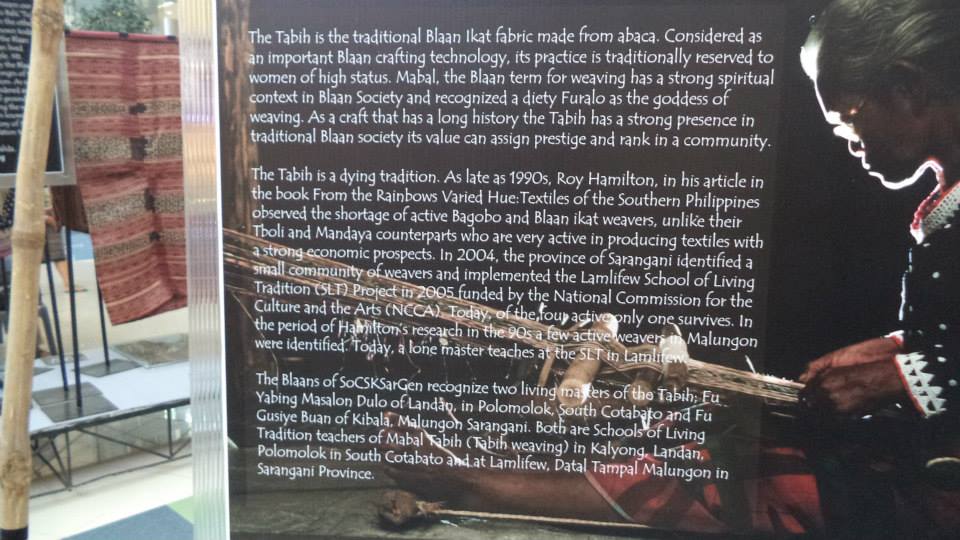Mabal is the Blaan term for the abaca weaving process. Tabih is the term for the finished hand woven cloth and it also refers to the traditional Blaan tubular skirt. Natural dyes from endemic plant species in the community are the source of colors for different designs of this indigenous textile.
"Blaan Tabih: reserve dyeing (warp – ikat); Weaving (plain); Accessorizing (applique, embroidery, added objects and braiding/twining). The Blaan Tabih is a reserve-dyed plain woven abaca." - Marian Pastor Roces, Sinaunang HABI Philippine Ancestral Weave
"Blaan Tabih: reserve dyeing (warp – ikat); Weaving (plain); Accessorizing (applique, embroidery, added objects and braiding/twining). The Blaan Tabih is a reserve-dyed plain woven abaca." - Marian Pastor Roces, Sinaunang HABI Philippine Ancestral Weave

